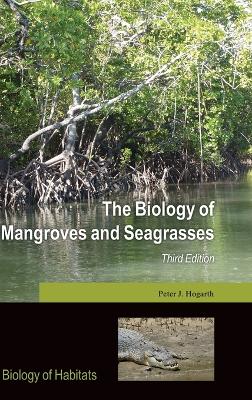Biology of Habitats
2 total works
Mangrove trees can flourish on shores where they are regularly flooded by seawater. Their rich, diverse, and biologically unique environment is of great biological interest, yet poorly understood. Mangroves are also of vital economic importance throughout the tropics, since they protect shores against erosion and are the basis of many local fisheries and other human activities. This book gives an overview of the biology of mangrove systems.
Mangroves and seagrasses form extensive and highly productive ecosystems that are both biologically diverse and economically valuable. This book, now in its third edition and fully updated throughout, continues to provide a current and comprehensive introduction to all aspects of the biology and ecology of mangroves and seagrasses. Using a global range of examples and case studies, it describes the unique adaptations of these plants to their exacting environments; the rich and diverse communities of organisms that depend on mangrove forests and seagrass meadows (including tree-climbing shrimps, synchronously flashing fireflies, and 'gardening' seacows); the links between mangrove, seagrass, and other habitats; and the evolution, biodiversity, and biogeography of mangroves and seagrasses. The economic value of mangroves and seagrasses is also discussed, including approaches to rational management of these vital resources and techniques for the restoration of degraded habitats. A final chapter, new to this edition, examines the potential effects of global climate change including sea level rise.
As with other titles in the Biology of Habitats Series, particular emphasis is placed on the organisms that dominate these fascinating aquatic ecosystems although pollution, conservation, and experimental aspects are also considered. This accessible textbook assumes no previous knowledge of mangrove or seagrass ecology and is intended for senior undergraduate and graduate students, as well as professional ecologists, conservation practitioners, and resource managers.
As with other titles in the Biology of Habitats Series, particular emphasis is placed on the organisms that dominate these fascinating aquatic ecosystems although pollution, conservation, and experimental aspects are also considered. This accessible textbook assumes no previous knowledge of mangrove or seagrass ecology and is intended for senior undergraduate and graduate students, as well as professional ecologists, conservation practitioners, and resource managers.

